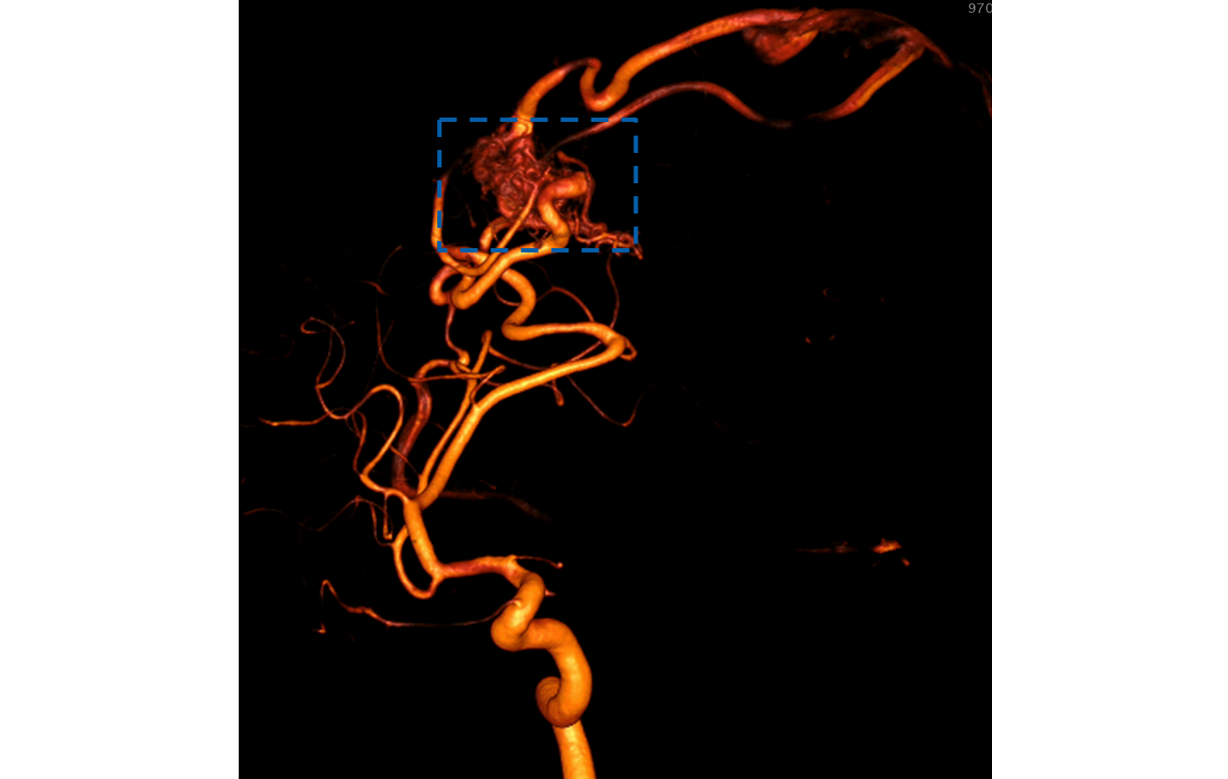Treatment options
Several treatment options exist for AVMs of the brain. They can be used alone or in combination:
- Endovascular embolization: After a groin puncture, we access and treat the vascular malformation via the arteries and veins. During the procedure, we insert plastic tubes (catheters) through the femoral artery and into the AVM and inject an agent that occludes its blood vessels. Endovascular embolization is less invasive than traditional surgery. It can be used alone or as a supportive measure before surgery since it reduces the size of the AVM and decreases the likelihood of bleeding. As a supportive measure, it makes the succeeding operation safer.
- Surgical removal (resection): The AVM can be surgically removed in a neurosurgical procedure, with or without preoperative embolization.
- Stereotactic radiosurgery (SRS): During this intervention, radiation is precisely directed at the AVM. The radiation damages the blood vessels of the AVM, leading to scarring, and, as a consequence, to the descrution of the AVM.
- Conservative treatment: As an alternative to invasive methods, conservative treatment (without surgery) is also considered. This is appropriate in cases where the risks of invasive treatment outweighs the natural risks of the disease.

Vascular malformation (arteriovenous malformation) in the blood vessels of the head. The AVM is visible as a vascular tangle.